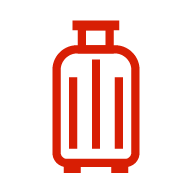Expansion of the Olefins Complex is a key development project envisaged by the ORLEN2030 strategy. Thanks to the technologies employed, it will put the ORLEN Group well on track to meeting the goals of its carbon neutrality strategy. Once brought on-stream, the new Olefin Complex will increase the Group’s share in the European petrochemical market from the current 5% to 6.4%, strengthening its competitive position and boosting its EBITDA by some PLN 1bn annually.
Petrochemicals produced by the Olefin Complex will be used in the manufacture of:
- Automotive parts
- Electronic equipment components
- Synthetic fibres for making clothing and protective masks
- Medical products
- Cleaning products
- Hygiene products
Project milestones:
June 12th 2018
- ORLEN’s Management Board approved the program of petrochemical segment development assuming as a key pillar realisation of the Olefins Complex
November 28th 2019
- Project management contractor (PMC+)contract for technical consultancy and project management services in connection with the planned expansion of the Olefin Complex signed by ORLEN with Flour, one of the world’s leading engineering design contractors. The PMC+ services will involve end-to-end project management across all functional areas – from managing timescales, costs, contractors and risks, through ensuring work safety, technical support and supervision of engineering design standards, to managing procurement and actual execution. The works will engage a fully integrated team, made up of ORLEN employees and a PMC+ consultant.
June 22nd 2021
- Final contract signed by ORLEN with the contractor for Europe’s largest petrochemical project in 20 years – Hyundai Engineering and Técnicas Reunidas, who will be responsible for building the main units of the Olefin Complex.
March 29th 2023
- ORLEN signed a contract with Consortium SEEN Technologie and Atrem S.A. for execution Decarbonated Water Unit and Post-Decarbonation Sludge Separation Unit, Condensate Treatment Unit and Demi Water Unit as a part of OSBL (outside battery limit) for the Olefin Complex.
2025
- Start of production
Technology
The main project deliverable will be a new steam cracker with an annual production capacity of 740 thousand tonnes of ethylene and 340 thousand tonnes of propylene. It will be the key project unit relying on a pyrolysis-based technology licensed from KBR. In the process, hydrocarbon feeds such as naphtha, LPG, and ethane are cracked into valuable petrochemical products. The cracking reaction (in which longer hydrocarbon chains are broken down into shorter ones) takes place at temperatures above 800°C, with heat from the process recovered to generate high-pressure steam. The process products are primarily olefins, such as ethylene and propylene. Other by-products include mixed C4s, gasoline (Pygas), pyrolisis oil and hydrogen.
Ethylene is the main product of the Olefin Complex. It is a colourless gas that naturally occurs in small quantities in natural gas and is secreted by plants as a hormone stimulating leaf fall and fruit ripening. Ethylene is used to make a wide range of polymers that have ubiquitous roles in everyday life e.g. as polyethylene and polyvinyl chloride (PVC). Polyethylene can be found in packaging, toys, home appliances, pipes, cable insulation and fuel tanks for cars, while PVC is largely used in construction to make pipes and energy-saving windows. Other products obtained from ethylene include ethylene oxide and ethylene glycols.
Propylene is the second largest base petrochemical having, like ethylene, the form of a colourless gas. Its main application is in polypropylene (PP), a plastic found in packaging, fibres for weaving carpets and upholstery, automotive parts, medical devices (including surgical masks) and outer casings for home appliances and electronics. To a lesser extent, propylene is used to make propylene oxide, which in turn is used in the manufacture of mattresses, foams and sponges for furniture and car seats, polyurethane insulation, and detergents. Another compound obtained from propylene is acrylonitrile, which is used in the manufacture of useful plastics such as ABS, found in suitcases and car interiors when combined with benzene propylene forms phenol and acetone.
Ethylene and propylene are used, among others, for the production of polyethylene and polypropylene.
Polyethylene is among others used for the production of:
Polypropylene is among others used for the production of:
Other units of the new Olefin Complex:
By-products of steam cracking include mixed C4s, which owe the name to four-carbon molecules present in the vast majority of hydrocarbons in the mixture. A portion of this fraction is processed by the ETBE unit, where it is reacted with ethanol and converted into ETBE (ethyl tertiary butyl ether ), which in turn is used as a high-octane component of motor gasolines. The other by-products of the ETBE unit are also refined into gasoline additives.
Products from the installation are used, among others, for the production of:
Another by-product of high temperature naphtha cracking is gasoline, also knows as Pygas (pyrolysis gasoline). It is a mixture of hydrocarbons with a high content of aromatics, i.e. compounds with ring-shaped molecular structures. In the past Pygas was blended with gasoline as an additive with a high octane number. Now it is used as a source of valuable aromatic hydrocarbons produced through extraction. One such product is styrene, a key intermediate material in making plastics, synthetic rubbers and resins, which have a broad spectrum of applications in the manufacture of electronics, in households, and in the automotive, construction, healthcare and packaging industries.
At the Olefin Complex, styrene will be purified based on an innovative technology involving crystallisation.
Products from the installation are used, among others, for the production of:
Once styrene has been extracted, pyrolytic gasoline goes to the PGH (pyrolysis gasoline hydrogenation) unit, where the process of hydrogenation, i.e. the attachment of hydrogen molecules, takes place. Such hydrogenated gasoline is then distilled into fractions with various properties. One of them is rich in benzene and toluene, separated through extraction into base petrochemical products. The other fractions are used in gasoline or diesel oil blending, enhancing the commercial properties of those fuels.
Products from the installation are used, among others, for the production of:
Ethylene oxide is an organic compound of the cyclic ethers group. Its main applications are in the production of ethylene glycols and polyols, for organic syntheses and to sterilise medical equipment.
The industrial route of obtaining ethylene oxide is through direct oxidation of ethylene by pure oxygen on a silver-based catalyst, followed by absorption and desorption to separate the product and its purification in a distillation column.
The new Olefin Complex will rely on a technology from Scientific Design, which provides a safe and efficient process yielding high purity ethylene oxide (min. 99.9% wt.) and monoethylene glycol of a quality suitable for the manufacture of fibres.
Products from the installation are used, among others, for the production of:











